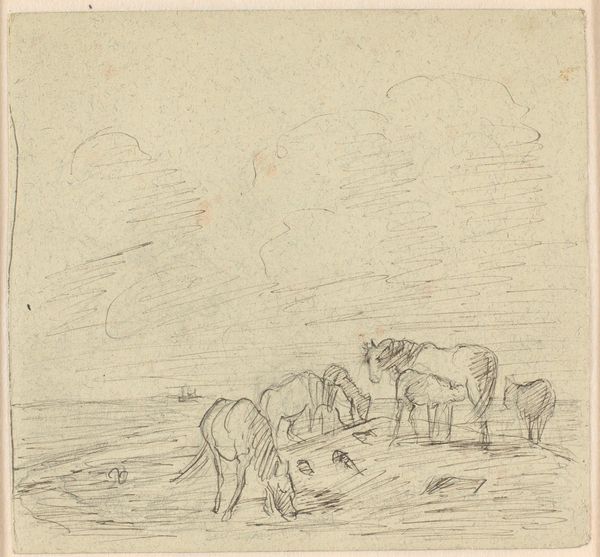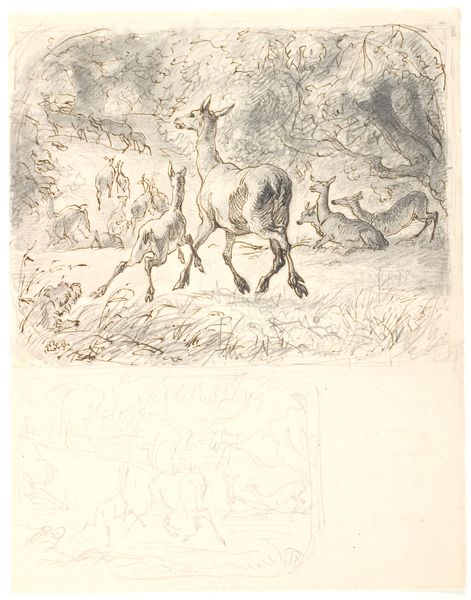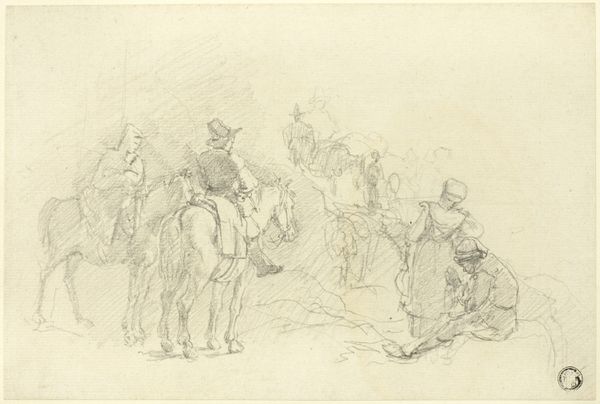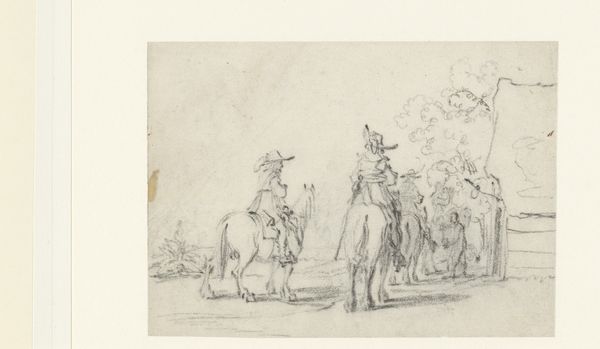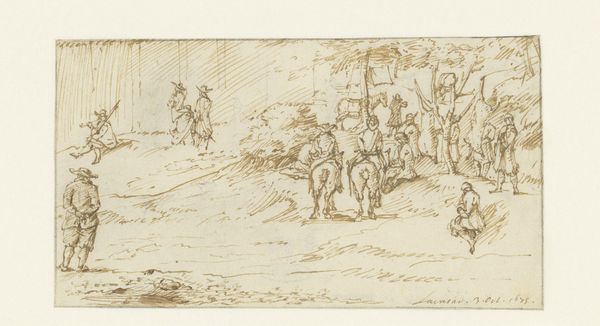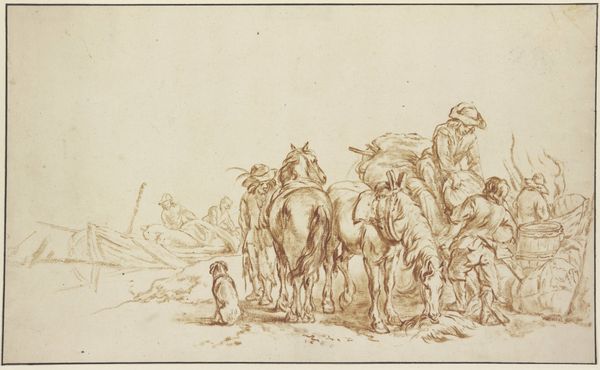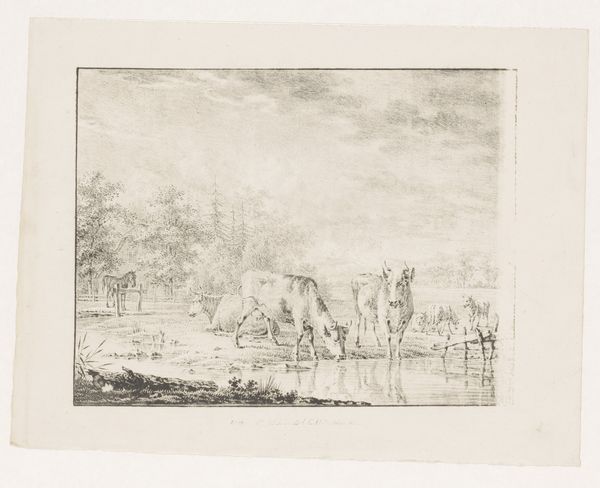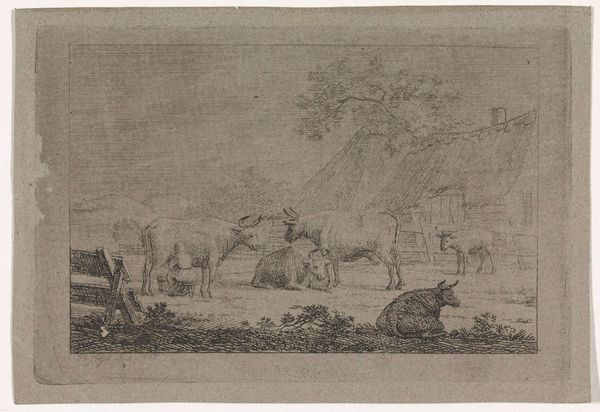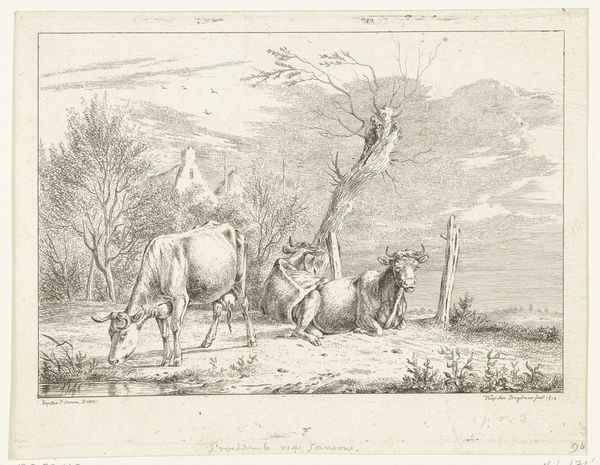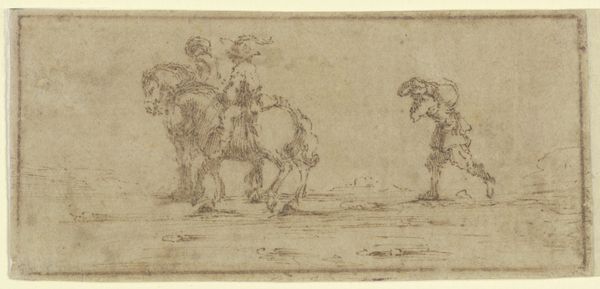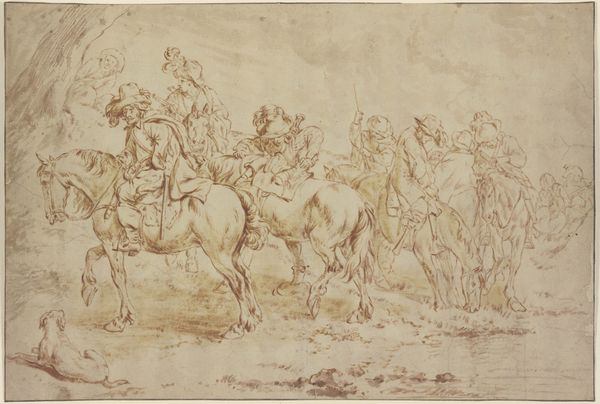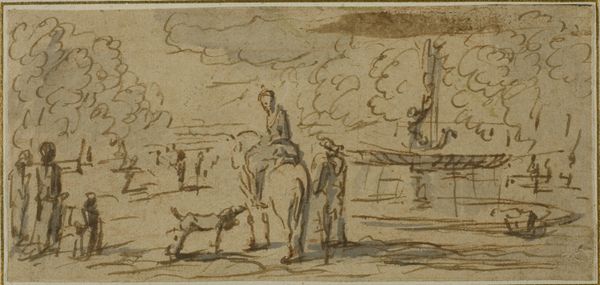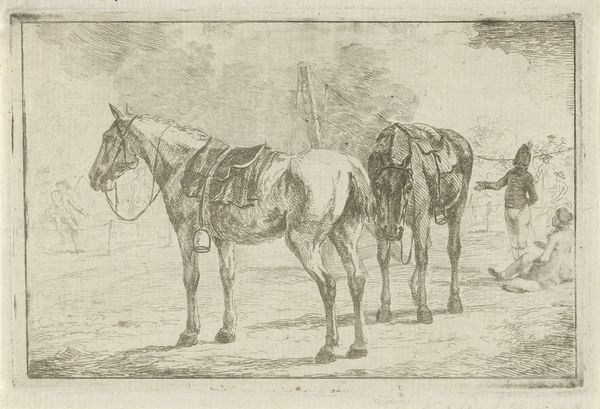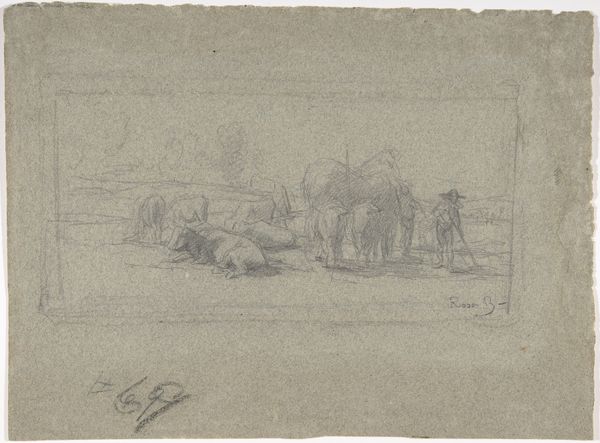
drawing, red-chalk
#
drawing
#
netherlandish
#
toned paper
#
light pencil work
#
baroque
#
ink painting
#
red-chalk
#
pencil sketch
#
etching
#
ink drawing experimentation
#
coffee painting
#
pen-ink sketch
#
14_17th-century
#
watercolour illustration
#
watercolor
Copyright: Public Domain
Editor: Here we have "Resting Man with Two Donkeys" by Philips Wouwerman, a red-chalk drawing housed here at the Städel Museum. The subdued palette and relaxed composition give it a sense of quietude. How would you interpret this work in its historical context? Curator: That sense of quietude is deceptive, I think. Wouwerman lived during the Dutch Golden Age, a period of immense economic and social upheaval. Consider the role of landscape in Dutch art at this time. Was it ever really *just* landscape? Editor: What do you mean? It seems to be about nature. Curator: Dutch landscapes were often infused with symbolism related to national identity, trade, and the complex social structures of the time. A seemingly simple scene like this could be a commentary on labor, leisure, or even the burgeoning merchant class. Who owned donkeys, and what did their care imply about economic status and rural versus urban life? Editor: So, even a "resting man" and his animals might represent something larger about the world they inhabited? Curator: Precisely. How the artist chose to portray them – their posture, their relationship to the land – becomes a political statement, even subtly so. Drawings like this were also commodities, collected and displayed to communicate social status, further complicating the art's public role. Editor: I never considered how something so seemingly serene could have these complex layers of meaning woven into it. Thank you. Curator: Indeed, art always reflects – and is reflected by – the socio-political realities of its time. The power of an image lies not only in its aesthetic appeal but also in its silent narratives.
Comments
No comments
Be the first to comment and join the conversation on the ultimate creative platform.
